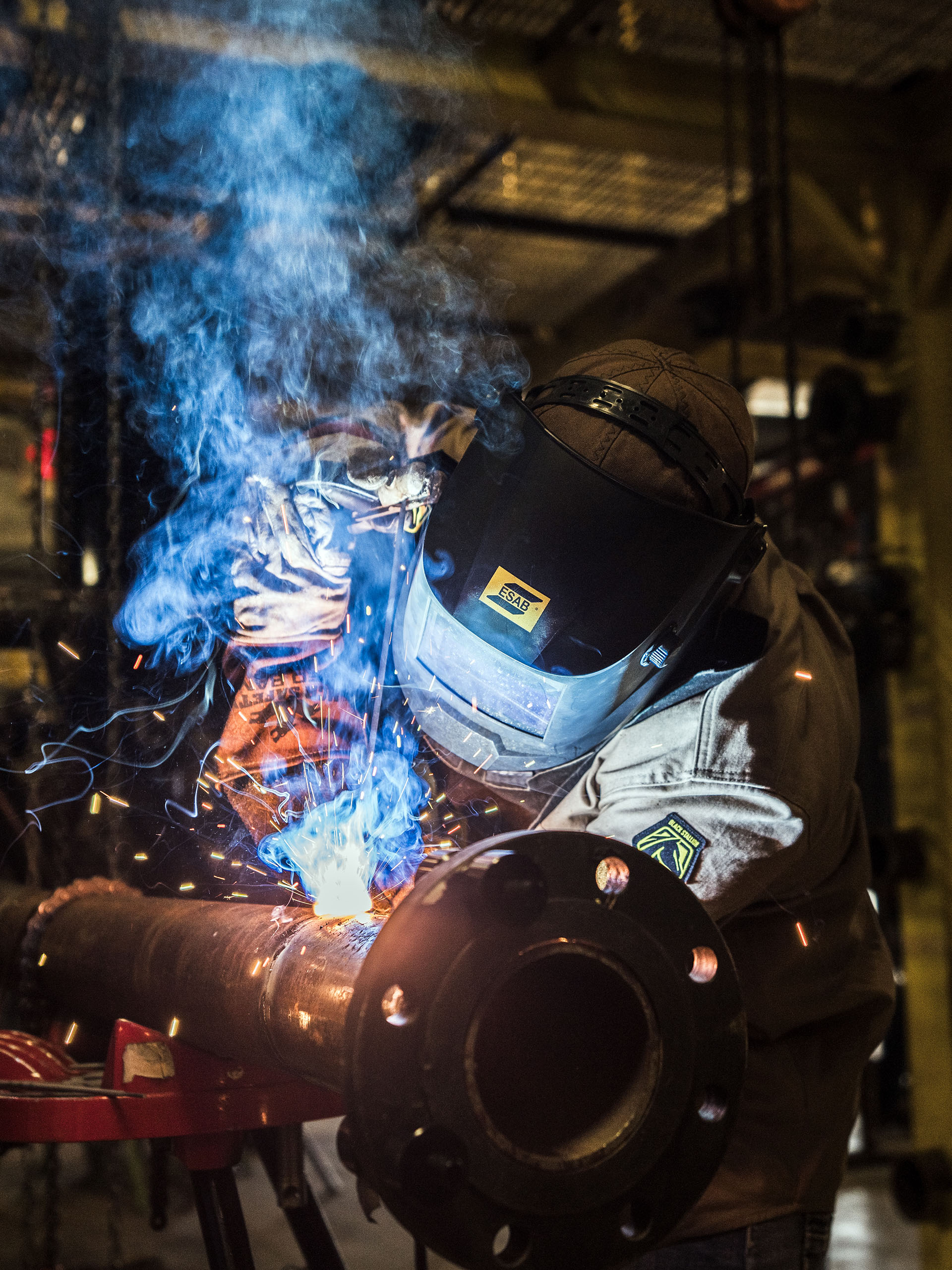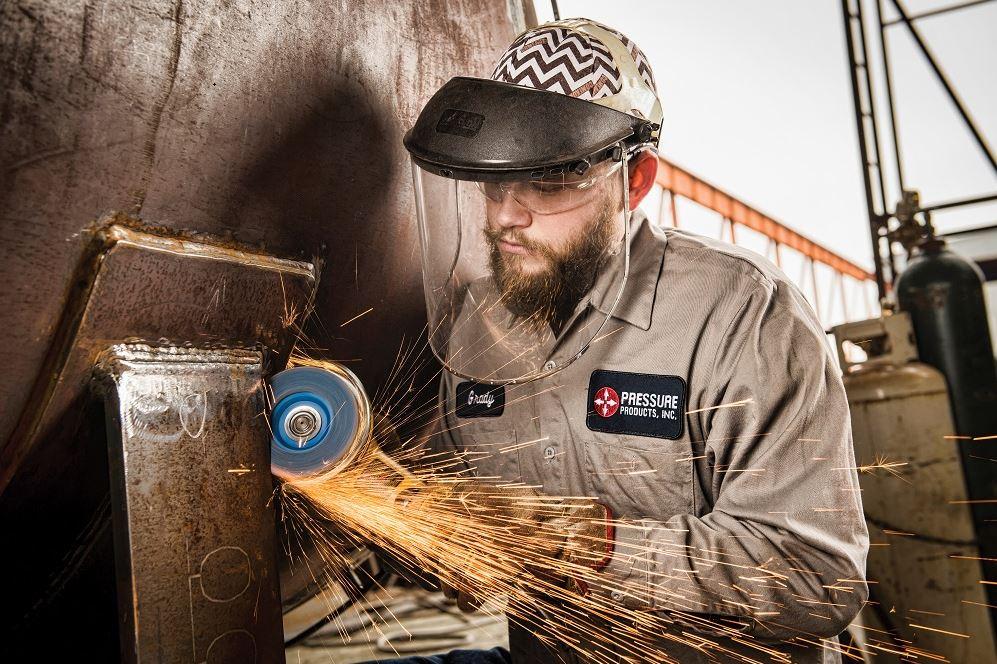Typical Welding Repair Work Issues and How to Address Them Effectively
Welding repair work usually experience a variety of problems that can endanger the integrity of the end product. Usual troubles consist of insufficient infiltration, porosity, and misalignment, to name a few. Each issue provides unique challenges that require specific strategies for resolution. Recognizing these issues is vital for welders aiming to enhance their results and skills. This discussion will discover these typical welding repair service concerns and reliable approaches to address them.
Insufficient Penetration
Inadequate penetration occurs when the weld steel stops working to fully fuse with the base product, resulting in weak joints and potential architectural failures. This problem typically comes from inadequate warm input, wrong electrode angle, or incorrect welding speed. Welders might experience inadequate infiltration because of a miscalculation of the essential criteria for a particular product thickness or kind. Furthermore, contamination on the base material's surface can impede efficient bonding, exacerbating the problem. To address inadequate penetration, welders must guarantee ideal setups on their equipment and preserve a tidy work surface area. Normal examination of welds is advised to identify any type of deficiencies early, permitting for timely corrections and the avoidance of compromised architectural honesty in welded assemblies.
Porosity
Porosity is a common flaw in bonded joints that manifests as small gas bubbles trapped within the weld steel. This flaw can endanger the stability of the weld, bring about reduced stamina and possible failing under stress. Fabrication. Porosity normally emerges from contamination, dampness, or inappropriate welding methods, which allow gases to get away right into the molten weld swimming pool. To attend to porosity, welders need to assure correct surface preparation, maintain a clean workplace, and utilize appropriate welding parameters. Additionally, selecting the ideal filler product and protecting gas can alleviate gas entrapment. Regular inspection and testing of welds can help identify porosity early, ensuring timely restorative activities are taken, consequently protecting the quality and reliability of the welded structure
Misalignment
Imbalance in welding can arise from different elements, including improper setup and thermal development. Understanding the origin creates is important for reliable resolution. A number of correction strategies are available to realign elements and assure structural honesty.
Reasons for Imbalance
Welding misalignment often stems from a selection of underlying issues that can jeopardize architectural integrity. One key reason is improper fit-up of parts before welding, which can cause voids and unequal surface areas. Variations in thermal growth throughout the welding procedure can additionally lead to distortion, especially if the products being joined have various coefficients of expansion. In addition, insufficient securing and fixturing may fail to hold parts securely in place, causing movement throughout welding. Badly kept devices, including welding equipments and devices, might introduce variances in the weld bead, further adding to imbalance. Finally, driver mistake, coming from insufficient training or experience, can likewise play a significant role in producing misaligned welds.
Adjustment Strategies Readily Available
Attending to imbalance successfully calls for a mix of restorative techniques customized to the certain problems at hand. One typical technique is making use of jigs or fixtures to hold components in the correct setting during welding, ensuring regular placement. Furthermore, preheating the materials can help in reducing distortion and enhance fit-up. For considerable imbalance, mechanical adjustment techniques, such as utilizing hydraulic jacks or clamps, can be employed to fix the setting prior to welding. Post-weld warmth treatment may likewise be necessary to relieve stress and anxieties brought on by misalignment. Cautious inspection and change throughout the setup phase can avoid misalignment concerns from ending up being considerable problems, advertising a smoother welding procedure and enhancing general architectural honesty.
Distortion
Distortion is a typical obstacle in welding that can occur from numerous variables, consisting of uneven home heating and cooling. Comprehending the sources of distortion is crucial for implementing reliable prevention methods. Resolving this concern not just improves architectural honesty but likewise improves the overall quality of the weld.
Root causes of Distortion
When subjected to the extreme warmth of welding, materials commonly go through changes that can result in distortion. This phenomenon mostly arises from thermal growth and tightening throughout the welding procedure. As the weld area warms up, the material broadens; upon cooling, it contracts, which can create interior anxieties. In addition, unequal heating across a work surface can worsen these tensions, causing bending or bending. The kind of material also plays a considerable duty; steels with varying thermal conductivity and coefficients of expansion might react in different ways, resulting in unforeseeable distortions. Furthermore, bad joint style and poor fixturing can contribute to imbalance during welding, enhancing the probability of distortion. Comprehending these causes is important for effective welding repair service and prevention strategies.
Prevention Techniques
Reliable avoidance strategies for distortion throughout welding concentrate on regulating warm input and guaranteeing appropriate joint style. Preserving a consistent warmth input helps to lessen thermal growth and contraction, which can lead to distortion. Utilizing strategies such as pre-heating the workpiece can likewise lower the temperature level slope, advertising uniform heating. In addition, this article picking suitable joint designs, such as T-joints or lap joints, can improve stability and lower tension concentrations. Applying appropriate fixturing to safeguard the blog workpieces in position even more help in maintaining placement during the welding procedure. Staggered welding series can distribute warm more evenly, preventing local distortion. By applying these techniques, welders can considerably lower the possibility of distortion and boost the overall high quality of their welds.
Fracturing
Fracturing is an usual problem come across in welding repair services, frequently arising from various variables such as improper cooling rates, material selection, or poor joint prep work. The incident of splits can substantially endanger the stability of the weld, resulting in potential failings during operation. To address this problem, welders need to first analyze the origin, making sure that products are suitable and properly selected for the certain application. Additionally, controlling the air conditioning price during the welding procedure is important; rapid air conditioning can induce tension and bring about cracking. Proper joint design and preparation also add to minimizing the risk. Implementing these methods can boost weld top quality and durability, inevitably lowering the likelihood of breaking in completed weldments.

Insufficient Fusion
A significant problem in welding repair work is incomplete combination, which occurs when the weld metal does not properly bond with the base material or previous weld passes - Montana Mobile Welding and Repair. This flaw can result in weaknesses in the joint, possibly compromising the stability of the welded framework. Variables adding to insufficient fusion consist of not enough heat input, incorrect welding strategy, and contamination of the surfaces being signed up with. To address this issue properly, welders must guarantee correct pre-weld cleaning and surface area preparation, as well as change their welding criteria to attain appropriate penetration and fusion. Regular inspection throughout the welding process can also assist identify insufficient blend early, permitting prompt rehabilitative measures to improve the total quality of the weld
Overheating
While welding fixings can improve architectural pvc welding honesty, overheating offers a considerable obstacle that can lead to product deterioration. Extreme heat during welding can alter the mechanical residential properties of metals, resulting in minimized strength, increased brittleness, and bending. This sensation is especially vital in high-stress applications where architectural integrity is vital. Recognizing getting too hot can entail visual inspections for staining or distortion, in addition to monitoring temperature level during the welding process. To mitigate the risks associated with overheating, welders should utilize proper methods, such as managing heat input, changing travel speed, and utilizing ideal filler materials. Furthermore, implementing pre- and post-weld warmth therapies can assist bring back material homes and boost the general top quality of the repair work, making sure long-lasting efficiency and safety and security.
Frequently Asked Inquiries
What Are the Typical Signs of a Welding Defect?

How Can I Evaluate My Welds for Quality?
To check welds for high quality, one can make use of aesthetic evaluations, ultrasonic screening, and radiographic approaches. Each technique ensures architectural stability, identifies problems, and confirms adherence to defined standards, ultimately improving the integrity of the welded joints.
What Security Safety Measures Should I Take While Welding?
When welding, one must focus on security by wearing ideal personal safety tools, guaranteeing correct air flow, securing combustible products away, preserving a tidy workspace, and recognizing environments to prevent accidents and injuries.
Can I Repair a Weld Without Redesigning the Entire Joint?
Fixing a weld without redoing the whole joint is possible, depending on the damage (Montana Mobile Welding and Repair). Techniques such as grinding, adding filler product, or utilizing a welding process can properly deal with particular flaws while maintaining the surrounding structure
What Tools Are Important for Reliable Welding Repairs?
Necessary devices for efficient welding repairs include a welding machine, cable brush, mill, protective equipment, clamps, and filler products. Each device plays an essential function in ensuring high quality and security throughout the repair work process. Porosity commonly occurs from contamination, dampness, or incorrect welding methods, which allow gases to get away into the liquified weld pool. Poorly kept devices, consisting of welding equipments and tools, might introduce disparities in the weld grain, additional adding to misalignment. When subjected to the extreme warmth of welding, materials typically undertake modifications that can lead to distortion. Breaking is an usual issue come across in welding fixings, often resulting from various elements such as incorrect air conditioning prices, material choice, or poor joint prep work. A significant concern in welding repair work is incomplete blend, which occurs when the weld steel does not appropriately bond with the base material or previous weld passes.
Comments on “Top advice from Belgrade Welding professionals”